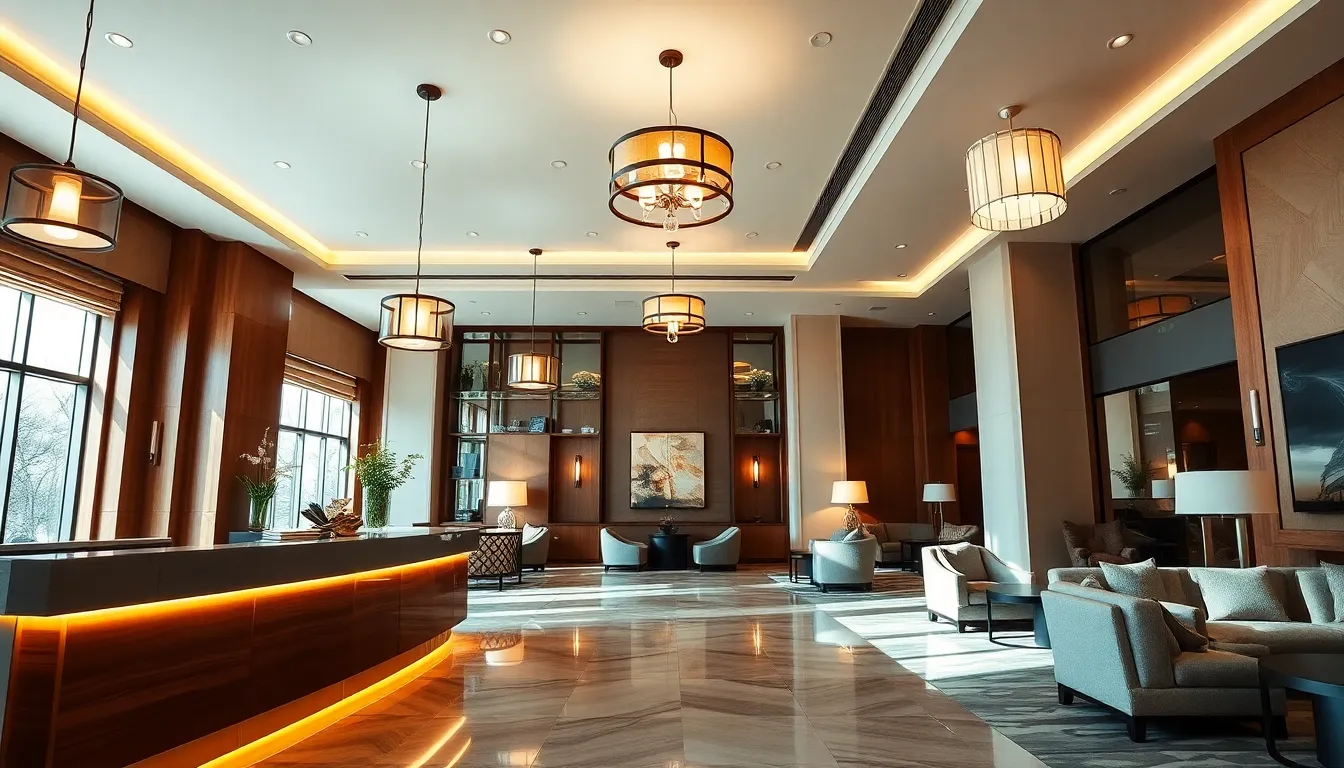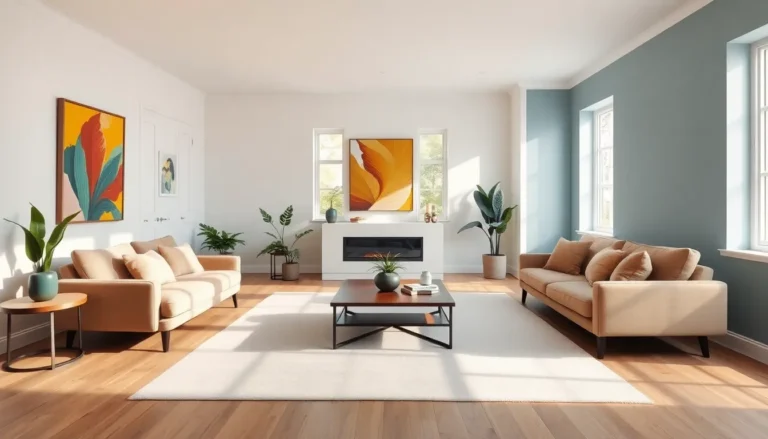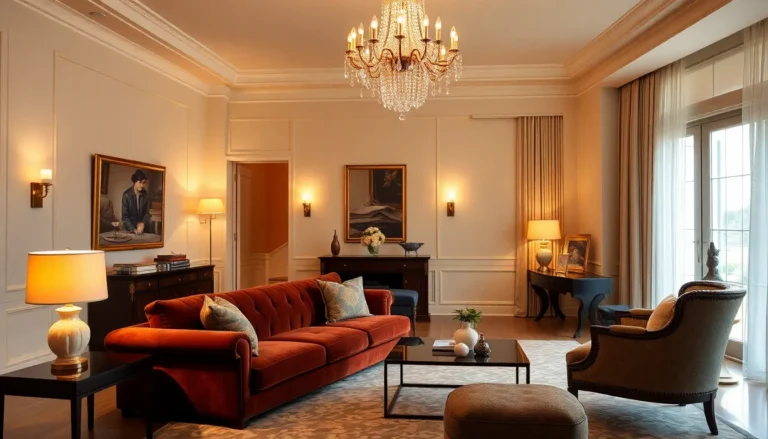Ever walked into a hotel room and thought, ‘Why does this feel like a cave?’ or ‘I could totally win an award for best selfies here’? Lighting plays a sneaky role in hotel stays, influencing mood, comfort, and even Instagram likes. Getting it right means the difference between a restful retreat and a hotel horror story. Join us as we shine a light, pun intended, on the significance of hotel lighting, exploring how it can elevate guest experience from ordinary to extraordinary.
Table of Contents
ToggleThe Importance of Lighting in Hotels

Lighting in hotels is more than just flicking a switch: it’s about setting a mood, enhancing decor, and creating a comfortable environment. Imagine walking into a dimly lit lobby after a long day of travel. That immediate sense of relaxation? That’s thanks to strategic lighting choices.
Good lighting can make a space feel warm and inviting, while poor lighting can lead to discomfort and even danger. It offers practical benefits too, aiding in navigation and highlighting key areas such as reception, lounges, and dining areas. Hotels that invest in effective lighting often see not just happier guests but also increased stay durations.
From cozy reading nooks to lively restaurants, every area benefits from its own tailored lighting scheme. It brings life to carefully chosen decor, and it influences guests’ overall satisfaction. So, the next time a guest raves about their comfortable stay, remember: it might just be the lighting that set the stage.
Types of Lighting Used in Hotels
When it comes to hotel lighting, variety isn’t just the spice of life: it’s a necessity. Hotels generally use three types of lighting: ambient, task, and accent. Each serves a purpose, and together they create a symphonic dance of light.
Ambient Lighting
This is the base layer of lighting. Ambient lighting softly illuminates a space, providing a general glow that makes most areas usable without harsh glare. Think of it as the soothing background music of your favorite café, soothing yet energizing.
Task Lighting
Task lighting is where the focus sharpens. Designed for specific tasks, like reading, grooming, or working, this type of light is often more direct and brighter. A bedside lamp or the light above a bathroom mirror exemplifies this type.
Accent Lighting
Accent lighting is all about drama. This type draws attention to artwork, architectural features, or decorative elements, creating visual interest and intrigue. It’s akin to a spotlight on a stage, showcasing the stars of the show.
The best hotel lighting designs incorporate all three types to create an inviting and functional atmosphere that caters to different guest needs.
Designing Effective Lighting Solutions
Designing effective lighting solutions for hotels can feel like a high-wire act requiring a reliable balance between design and functionality. The process begins with understanding the space.
For instance, a stunning chandelier can transform a lobby, but it must also provide sufficient light for guests checking in or congregating. Zone lighting, where different areas are lit according to their function, should be considered, ensuring that social areas feel welcoming and intimate, while corridors remain bright enough for safe navigation.
Perception is key. When layering lighting, it’s essential to consider color temperature. Warm lights are inviting and calm, perfect for lounges or dining areas, whereas cooler lights can energize spaces like gyms or workrooms. Also, dimmable fixtures provide versatility, allowing guests to adjust ambience to their liking.
Incorporating smart technology can enhance the experience even further. Systems that allow guests to control their own lighting make them feel at home and provide a personalized touch. Also, ensuring that the design meshes with the overall theme of the hotel, be it modern, vintage, or boutique, helps create a cohesive atmosphere.
Energy Efficiency and Sustainability
With increasing awareness around energy consumption and sustainability, hotels are rightfully jumping on the bandwagon. Energy-efficient lighting solutions aren’t just a fad: they’re an integral part of modern hotel design. LED technology leads the charge. These lights use significantly less energy than traditional bulbs and last longer, saving hotels money in the long run.
Also, energy-efficient lighting doesn’t mean sacrificing quality. New age LEDs come in a range of colors and styles, proving that green can be glamorous. Beyond the financial lure, many guests now prioritize sustainability. They appreciate eco-friendly approaches.
Using natural light can also reduce energy demand during daytime hours. Thoughtful architecture and design can incorporate large windows, skylights, or light wells that capitalize on sunlight. It’s all about harmonizing with nature. By adopting these practices, hotels not only decrease their footprints but also curate an inviting space that resonates with eco-conscious travelers.
Trends in Hotel Lighting Design
As design trends evolve, so do lighting solutions in hotel settings. Today, a blend of functionality and aesthetics leads the charge. Minimalist designs are in, focusing on sleek fixtures that disappear into the background, enhancing rather than overwhelming.
Sustainable materials also shine brightly. Fixtures made from recycled materials are becoming more common, reflecting the green ethos that more and more hotels are adopting. Smart lighting systems are likewise on the rise. Guests can now tailor their experience at the touch of a button.
Incorporating biophilic design, bringing the natural world indoors, is another trend catching fire. Lighting that mimics natural light patterns can not only enhance ambiance but also improve guests’ wellbeing.
Finally, personalized experiences are trending. Hotels are now exploring how adjustable lighting settings can cater to individual tastes, allowing guests to create their desired mood and comfort. With innovations coming every year, the future of hotel lighting design looks bright.




